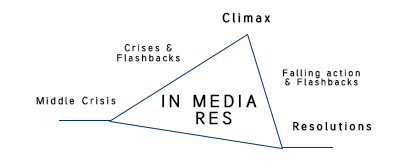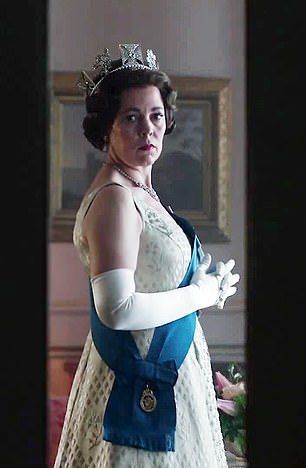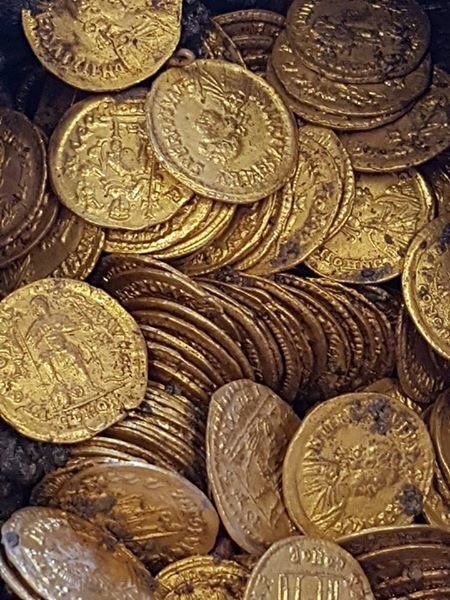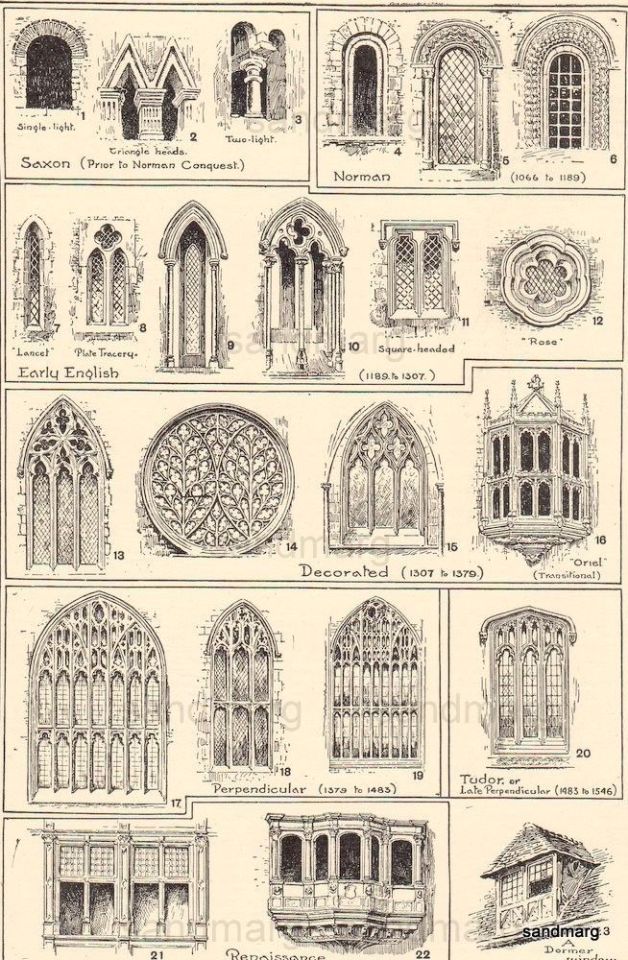Text
Plot This: Structure Guide
Alright so if you’re a writer then you’ve probably familiarized yourself with plot…and the structure it provides to a novel. There are countless articles online on “how to plot a novel” or the like. Which is fantastic for you writers because it’s at a fingers reach from us. Not so great when there’s about…a billion ways one can go about plotting a novel. It can seem daunting and overwhelming and more important confusing!
I want to break down this massive task bit by bit. Starting with the very bare bones and working into more detailed parts. Making it more manageable.
Now, I know some of you might roll your eyes and say I know all there is to know about plot. I was you. I went into every workshop and craft class thinking the same thing. And yet, when I started plotting my recent WIP ( The Cost of Defeat ) I realized I didn’t know jack. I thought every story I ever wrote would adhere to my system of structure because of sheer will and blunt force. Yeah wrong.
It wasn’t until just recently I started diving into the structure ( because I like pretty diagrams and being organized way more than I should) that I discovered there are a lot of different Plot Structures out there. No one bothered to ever teach me let alone discuss these things. My mind was blown.
Some worked better for me than others. Some mesh better together than others. It’s all about experimenting and figuring out what works for you. And I’m hoping that this will also help others, or at least give a jumping off point. Now it’s not a whole list ( there’s a lot of elements that I could probably talk about by themselves) but it’s a good overview of the popular ones that reoccur a lot.
1) Freytag’s Pyramid
Freytag’s pyramid is the most basic plot structure I know. It’s the one we’ve all seen in school when we start learning about story structure and analysis.

This bad boy is the simplest plot structure used to dissect and understand Greek and Shakespearean Plays.
Pros
x Simplistic. Makes it easy to understand
x Great for those just starting ( or those who want to understand film and literature analysis.
x Great for AP Literature/Comp papers
Cons
x It creates simple stories
x Not super awesome for modern novels or anything longer than about 25K words
Uses
x Children’s Literature. Picture books mostly. Children are still learning to understand things like conflict effect on characters and having such a long falling action allows for that.
x Short Stories. Since short stories are compact for punch, this structure allows you to get the most done without boring the reader in 25K words or less.
x Analysis. This structure is the easiest and most common to apply to plays, film, tv and even in classic literature. It’s a great way to dissect plot and events in order to better understand the pieces working parts
Examples: Shakespeare's Hamlet and Romeo and Juliet
Sophocles’s Antigone
Henrik Ibsen A Doll House
2) Three-Act Structure
The Three-Act Structure is probably the most known. We all know this intuitively as storytellers. Everything needs a beginning middle and end, after all.

This structure is very similar to Freytag’s Pyramid but adds elements that beef up and create points of interest. Obstacles, for example, add conflict and build up suspense for the climax. It’s also important to note that the falling action and resolution is much more compact.
Pros
x basic building block for all good stories
x Roadmap-like so you can be systematic about things
x Good “big-picture” visual
Cons
x Pacing is super important for this
x Bit rigid and formulaic
Uses
x Literally anything. Because it’s versatile it works on a plethera of stuff, let your imagineation run wild.
x Film analysis. This struccture is like the holy grail in almost any film class ( sometimes they call it the four act structure)
Examples: Sir Arthur Conan Doyle Sherlock Holmes
Alfred Hitchcock’s Vertigo
Jane Austin’s Pride and Prejudice
3) The Fichtean Curve
The Fichten Curve Is really unique in that it starts right with the rising action. There ain’t no time to build up or nice slow introductions, you’re dumping the readers right where it hurts. But you make up that lost time with the small bits of exposition

This is one of the most popular plot structures for modern novels.
Pros
x A lot of opportunities to ramp up the stakes, bit after bit
x Good for pacing
x Great for Overcoming Monster & Quest stories
x Translate over almost any genre
Cons
x Not a lot of time to slow down, breathe
x Not suited for Voyage and Return, Comedy or Rebirth stories
Uses
x Thrillers/Mystery novels. You need something to keep readers in the story, chomping at the bit. here’s the plot structure for you.
Examples: Max Brooks’s World War Z
4) Plot Embryo/Hero’s Journey
The Hero’s Journey is also super common in the literature (namely western literature) With this plot the protagonist ( the hero of hero’s journey) undergoes a literal or figurative death-like transformation that changes him.

The protagonist must venture from one state into another. To take it a step further there’s a variation called the Ploy Embyro. Dan Harmon takes the hero’s journey a bit deeper and modernizes. [ here’a great video on it by youtuber Rachel Stephen x]

As you can see, the Hero’s Journey and Ploy Embyro are both cyclical. This baby comes full circle in both plot and character. They have similar plot points. But if I were to gush about this the post would be waaay longer than it already is. This is one of my preferred methods because it just makes sense for me and allows me to have some freedom and wiggle room while still adhering to the 3 acts.
Pros
x Character development holla, cause this is where it’s at.
x Visually appealing
x Simple 8 point outline ( for those who might not enjoy long-winded outlines)
x Works alongside A beat sheet ( if you use that sort of thing)
x The holy grail for myths.
Cons
x Overdone ( but it doesn’t have to be a bad thing)
x Not suited for those who really detailed outlines
Uses
x Adventure Stories. It is all about the adventure and journey with this
x Myth Retellings. I mean it’s based on the myth structure of the Odyssey and the like so it makes sense
Examples: Harper Lee’s To Kill a Mockingbird
Rick Riordan’s The Lightning Thief
J. R R. Tolktien’s The Hobbit
5) In Media Res
A literal translation to “In the Middle”. This plot structure dumps you right in the middle of the story. Think if you were to open a story on the second of third crisis/pinch point. there’s still a lot of upward trajectory to go before the climax.

Don’t confuse this with simply opening a story mid fight/action. Media Res starts well deep into the story itself, close to the climax but with enough room you can still build up to it.
Pros
x High Actions
x Simple and fun to play with
x A good use for flashbacks
x Hell of a hook for readers
Cons
x Can be confusing for reader’s if not done right
x No build up
x takes some finessing to get just right
Uses
x Mysteries. This is a great plot if you want to start a story perhaps where the killer has already committed the murder.
x Epic Poems. Maybe you wanna write the next epic poem, this is great for that.
Examples John Milton’s Paradise Lost
Homer’s Illiad
George Lucas’s Star Wars
Now I could go on and on but this monster of a post has carried on long enough. If there’s a certain structure you’d like me to go into more detail about feel free to leave a comment on this post and I’ll be sure to add it to my line up!!
As always happy writing/creating!
XO Morgan
10K notes
·
View notes
Text
*goes into my imagination and plays with my ocs like i’m a four year old with a dollhouse*
69K notes
·
View notes
Text
Fantasy Guide to A Monarch's Council

A Monarch will almost never be alone while ruling their kingdom. Even the most autocratic rulers will rely on councillors and advisors to get them through the day- even if the monarch does not take the advice given. For @bewareofhumanssociety
Monarch

The Monarch does not have to attend the meetings but they probably should. It is here that they will hear issues facing their kingdom and opportunities on hand of its expansion/betterment. The Monarch would make decisions based on advice offered their councilors, signing official documents and speaking with their ambassadors.
Lord Chancellor/Prime Minister/Vizier

This Councillor is the second most powerful person in the Kingdom. They have possession of the Great Seal of the Realm (an ornate stamp of Office used to seal official documents) and headed the Monarch's council. They would be responsible for most of the daily running of the kingdom, sometimes the real ruler of the country. They would head the council in the monarch's absence, sometimes acting as Regent when called upon.
Comptroller of the Royal Household

This position was filled by the Monarch's Chamberlain/Steward who had the run of the royal households. They acted in concert with the monarch's other councilors to ensure the monarch's lifestyle was being maintained.
Solicitor-General

The Solicitor General is the councilor on hand to give the Monarch legal advice. The modern Solicitor General represents the monarch in court if needed and acts as a law advisor.
Treasurer

The treasurer was in charge of the finances of the realm. They would have hundreds of accountants, tax takers and businessmen at their beck and call. They would be in charge of collecting the income of the realm and putting it to good use. The treasurer is usually a powerful but unpopular position.
Lord Protector

The Lord Protector is not a permanent spot on the council, only needed when the monarch is incapacitated or too young to rule their country. The Lord Protector would take on the duties of a monarch during their tenure.
Royal Secretary

The royal Secretary is in charge of the monarch's political correspondences, keeping the council's paperwork in order and is generally tasked with communicating the monarch's choices to the other councilors.
Marshall of the Field

The Marshall of the Field is sometimes present at council meetings, most often before a warm They are given their orders from the monarch to represent their interests upon the field of battle. It was an honour almost exclusively given to nobility.
Admiral of the Royal Navy

Like the Marshall of the Field, the Admiral has charge of the operations of the monarch's fleet of ships. The Admiral would be tasked with the defense of the coast and the overall running of the kingdom's sea power.
2K notes
·
View notes
Text
Me: *trying to sleep*
New fanfic idea that I’ll probably never write:

24K notes
·
View notes
Text
Both Persons A and B, about each other, at That Point of the Fanfic™:

34K notes
·
View notes
Text
“i’m so proud of you,” i whisper as my favorite character undergoes well written character development
289K notes
·
View notes
Text
I don’t believe in love at first sight, but I do know who’s gonna be my favorite character from like, two seconds of screen time.
202K notes
·
View notes
Text
my ocs arent mine theyre actual real people and they do what ever they want in my brain when im sleeping
17K notes
·
View notes
Text

I made a thing.
I didn't need to call myself out like this .
But I did.
6K notes
·
View notes
Text
Me: Don’t get attached to this character, he’s obviously an antagonist, he’s murdered multiple people, DON’T GET ATTACHED 
My brain: UwU but he’s a hurt boi, maybe he’ll get a redemption arc
29 notes
·
View notes
Text
types of writing sessions
got on computer, looked at document, was like “fuck this shit” and got off
wrote like 150 words that consist of bloating the existing useless conversation or scene even more
wrote SO MANY WORDS but it was because you were so desperate to escape the Bad Part
wrote SO MANY WORDS but it was because you were so desperate to get closer to the Good Part
got on your document, ran into research issue, spent like an hour on Wikipedia, ah shit
the somewhat satisfying “fixing everything I hated about the scene I wrote the day before” session
decent amount of progress that took like 3x longer than it should have because you were repeatedly distracted
In The Zone and completely absorbed, just BLAZING through a few thousand words, probably close to the ending, probably listening to playlist
Not actually a writing session, just listening to playlist
the session where you write like a paragraph, suddenly realize the unfixability of your current plot predicament, and cry
that weird session where you don’t have much time and you’re super tired and you write like a page but you reread it the next morning and holy shit these words came from the fingers of god why is it so good
that session that is purely just navigating the boring shit of getting from one scene to the next and it sucks but you leave off on the cusp of something interesting and it feels good
the satisfyingly exhausting session where you write the Good Part and you’re confident it came out pretty well and you’re full of thoughts and stuff about where things are going next but you need to let them rest
get on computer, write exactly one sentence, get off computer. Now you can say you wrote today
31K notes
·
View notes
Text
Writing a Blind or Visually Impaired Character
A Multi-Step Guide Written by a Visually Impaired Writer and Blogger
I’m hoping this blog will over time develop its own following, and when it does people will inevitably see my bio and notice what I included: I’m visually impaired.
Yes, a visually impaired writer, and I’ve written with two blind characters before so I have some practice in the field.
So, inevitably, someone is going to ask how to write a blind character.
Or, at least, I hope you’ll ask someone who’s actually blind or visually impaired about writing a blind character before you get too involved with your new WIP.
I started writing this guide two hours ago and it’s gotten away from me. It make it a more manageable read, I’m going to separate it into X many parts, and each part will be linked.
Part One: Crafting the Blind Character
https://mimzy-writing-online.tumblr.com/post/185123396964/writing-a-blind-or-visually-impaired-character
Part Two: Writing the Blind Character, including narrative choice, visual description, verbal description, social interaction
https://mimzy-writing-online.tumblr.com/post/185125198184/writing-blind-or-visually-impaired-characters
Part Three: Tropes and Cliches to Avoid
https://mimzy-writing-online.tumblr.com/post/185124340794/writing-blind-and-visually-impaired-characters
-New- Part Four: Canes, Guide Dogs, and O&M
https://mimzy-writing-online.tumblr.com/post/626905503992348672/writing-a-blindvisually-impaired-character
Part Five: Small Aspects of being Blind You Never Thought Of
https://mimzy-writing-online.tumblr.com/post/185134862519/writing-a-blind-of-visually-impaired-character
Part Six: Should You Cure Your Character’s Blindness? (Short Answer: No)
https://mimzy-writing-online.tumblr.com/post/185125880559/writing-a-blind-or-visually-impaired-character
Writing Blind Characters Falling in Love, an Advice Post:
https://mimzy-writing-online.tumblr.com/post/186276022234/writing-blind-characters-falling-in-love-an
Writing Blind Jokes (Should You Do It?)
https://mimzy-writing-online.tumblr.com/post/187906205649/writing-a-blindvisually-impaired-character-blind
A small essay addressing the frequently asked question on giving your blind character a superpower to help them “see.”
https://mimzy-writing-online.tumblr.com/post/187913512454/blind-characters-and-superpowers
Mourning My Vision, it’s More than Depression. A small personal essay addressing the nuances of the mourning period you experience with a new disability. The mourning period is mentioned in other guides, but this is more detailed.
https://mimzy-writing-online.tumblr.com/post/188649694569/mourning-my-vision-its-more-than-depression
All parts will be tagged #blindcharacter in my blog, and I will add links to every post as I finish each part. Follow my blog for more writing advice.
31K notes
·
View notes
Text
Fantasy Guide to Architecture






This post has been waiting on the back burner for weeks and during this time of quarantine, I have decided to tackle it. This is probably the longest post I have ever done. I is very tired and hope that I have covered everything from Ancient times to the 19th Century, that will help you guys with your worldbuilding.
Materials
What you build with can be determined by the project you intend, the terrain you build on and the availability of the material. It is one characteristic that we writers can take some some liberties with.
Granite: Granite is an stone formed of Igneous activity near a fissure of the earth or a volcano. Granites come in a wide range of colour, most commonly white, pink, or grey depending on the minerals present. Granite is hard and a durable material to build with. It can be built with without being smoothed but it looks bitchin' and shiny all polished up.
Marble: Probably everyone's go to materials for building grand palaces and temples. Marble is formed when great pressure is placed on limestone. Marble can be easily damaged over time by rain as the calcium in the rock dissolves with the chemicals found in rain. Marble comes in blue, white, green, black, white, red, gray and yellow. Marble is an expensive material to build with, highly sought after for the most important buildings. Marble is easy to carve and shape and polishes to a high gleam. Marble is found at converging plate boundaries.
Obsidian: Obsidian is probably one of the most popular stones mentioned in fantasy works. Obsidian is an igneous rock formed of lava cooling quickly on the earth's surfaces. Obsidian is a very brittle and shiny stone, easy to polish but not quite a good building material but a decorative one.
Limestone: Limestone is made of fragments of marine fossils. Limestone is one of the oldest building materials. Limestone is an easy material to shape but it is easily eroded by rain which leads most limestone monuments looking weathered.
Concrete: Concrete has been around since the Romans. Concrete is formed when aggregate (crushed limstone, gravel or granite mixed with fine dust and sand) is mixed with water. Concrete can be poured into the desired shape making it a cheap and easy building material.
Brick: Brick was one of history's most expensive materials because they took so long to make. Bricks were formed of clay, soil, sand, and lime or concrete and joined together with mortar. The facade of Hampton Court Palace is all of red brick, a statement of wealth in the times.
Glass: Glass is formed of sand heated until it hardens. Glass is an expensive material and for many years, glass could not be found in most buildings as having glass made was very expensive.
Plaster: Plaster is made from gypsum and lime mixed with water. It was used for decoration purposes and to seal walls. A little known fact, children. Castle walls were likely painted with plaster or white render on the interior.
Wattle and Daub: Wattle and daub is a building material formed of woven sticks cemented with a mixture of mud, one of the most common and popular materials throughout time.
Building terms
Arcade: An arcade is a row of arches, supported by columns.
Arch: An arch is a curved feature built to support weight often used for a window or doorway.
Mosaic: Mosaics are a design element that involves using pieces of coloured glass and fitted them together upon the floor or wall to form images.
Frescos: A design element of painting images upon wet plaster.
Buttress: A structure built to reinforce and support a wall.
Column: A column is a pillar of stone or wood built to support a ceiling. We will see more of columns later on.
Eave: Eaves are the edges of overhanging roofs built to allow eater to run off.
Vaulted Ceiling: The vaulted ceilings is a self-supporting arched ceiling, than spans over a chamber or a corridor.
Colonnade: A colonnade is a row of columns joined the entablature.
Entablature: a succession of bands laying atop the tops of columns.
Bay Window: The Bay Window is a window projecting outward from a building.
Courtyard/ Atrium/ Court: The courtyard is an open area surrounded by buildings on all sides
Dome: The dome resembles a hollow half of a sphere set atop walls as a ceiling.
Façade: the exterior side of a building
Gable: The gable is a triangular part of a roof when two intersecting roof slabs meet in the middle.
Hyphen: The hyphen is a smaller building connecting between two larger structures.
Now, let's look at some historical building styles and their characteristics of each Architectural movement.
Classical Style
The classical style of Architecture cannot be grouped into just one period. We have five: Doric (Greek), Ionic (Greek), Corinthian (Greek), Tuscan (Roman) and Composite (Mixed).
Doric: Doric is the oldest of the orders and some argue it is the simplest. The columns of this style are set close together, without bases and carved with concave curves called flutes. The capitals (the top of the column) are plain often built with a curve at the base called an echinus and are topped by a square at the apex called an abacus. The entablature is marked by frieze of vertical channels/triglyphs. In between the channels would be detail of carved marble. The Parthenon in Athens is your best example of Doric architecture.
Ionic: The Ionic style was used for smaller buildings and the interiors. The columns had twin volutes, scroll-like designs on its capital. Between these scrolls, there was a carved curve known as an egg and in this style the entablature is much narrower and the frieze is thick with carvings. The example of Ionic Architecture is the Temple to Athena Nike at the Athens Acropolis.
Corinthian: The Corinthian style has some similarities with the Ionic order, the bases, entablature and columns almost the same but the capital is more ornate its base, column, and entablature, but its capital is far more ornate, commonly carved with depictions of acanthus leaves. The style was more slender than the others on this list, used less for bearing weight but more for decoration. Corinthian style can be found along the top levels of the Colosseum in Rome.
Tuscan: The Tuscan order shares much with the Doric order, but the columns are un-fluted and smooth. The entablature is far simpler, formed without triglyphs or guttae. The columns are capped with round capitals.
Composite: This style is mixed. It features the volutes of the Ionic order and the capitals of the Corinthian order. The volutes are larger in these columns and often more ornate. The column's capital is rather plain. for the capital, with no consistent differences to that above or below the capital.
Islamic Architecture
Islamic architecture is the blanket term for the architectural styles of the buildings most associated with the eponymous faith. The style covers early Islamic times to the present day. Islamic Architecture has some influences from Mesopotamian, Roman, Byzantine, China and the Mongols.
Paradise garden: As gardens are an important symbol in Islam, they are very popular in most Islamic-style buildings. The paradise gardens are commonly symmetrical and often enclosed within walls. The most common style of garden is split into four rectangular with a pond or water feature at the very heart. Paradise gardens commonly have canals, fountains, ponds, pools and fruit trees as the presence of water and scent is essential to a paradise garden.
Sehan: The Sehan is a traditional courtyard. When built at a residence or any place not considered to be a religious site, the sehan is a private courtyard. The sehan will be full of flowering plants, water features snd likely surrounded by walls. The space offers shade, water and protection from summer heat. It was also an area where women might cast off their hijabs as the sehan was considered a private area and the hijab was not required. A sehan is also the term for a courtyard of a mosque. These courtyards would be surrounded by buildings on all sides, yet have no ceiling, leaving it open to the air. Sehans will feature a cleansing pool at the centre, set under a howz, a pavilion to protect the water. The courtyard is used for rituals but also a place of rest and gathering.
Hypostyle Hall: The Hypostyle is a hall, open to the sky and supported by columns leading to a reception hall off the main hall to the right.
Muqarnas : Muqarnas is a type of ornamentation within a dome or a half domed, sometimes called a "honeycomb", or "stalactite" vaulted ceiling. This would be cast from stone, wood, brick or stucco, used to ornament the inside of a dome or cupola. Muqarnas are used to create transitions between spaces, offering a buffer between the spaces.
African Architecture
African Architecture is a very mixed bag and more structurally different and impressive than Hollywood would have you believe. Far beyond the common depictions of primitive buildings, the African nations were among the giants of their time in architecture, no style quite the same as the last but just as breathtaking.
Somali architecture: The Somali were probably had one of Africa's most diverse and impressive architectural styles. Somali Architecture relies heavy on masonry, carving stone to shape the numerous forts, temples, mosques, royal residences, aqueducts and towers. Islamic architecture was the main inspiration for some of the details of the buildings. The Somali used sun-dried bricks, limestone and many other materials to form their impressive buildings, for example the burial monuments called taalo
Ashanti Architecture: The Ashanti style can be found in present day Ghana. The style incorporates walls of plaster formed of mud and designed with bright paint and buildings with a courtyard at the heart, not unlike another examples on this post. The Ashanti also formed their buildings of the favourite method of wattle and daub.
Afrikaner Architecture: This is probably one of the oddest architectural styles to see. Inspired by Dutch settlers (squatters), the buildings of the colony (planters/squatters) of South Africa took on a distinctive Dutch look but with an Afrikaner twist to it making it seem both familiar and strange at the same time.
Rwandan Architecture: The Rwandans commonly built of hardened clay with thatched roofs of dried grass or reeds. Mats of woven reeds carpeted the floors of royal abodes. These residences folded about a large public area known as a karubanda and were often so large that they became almost like a maze, connecting different chambers/huts of all kinds of uses be they residential or for other purposes.
Aksumite Architecture: The Aksumite was an Empire in modern day Ethiopia. The Aksumites created buildings from stone, hewn into place. One only has to look at the example of Bete Medhane Alem to see how imposing it was.
Yoruba Architecture: Yoruba Architecture was made by earth cured until it hardened enough to form into walls, or they used wattle and daub, roofed by timbers slats coated in woven grass or leaves. Each unit divided up parts of the buildings from facilities to residences, all with multiple entrances, connected together.
Igbo Architecture: The Igbo style follows some patterns of the Yoruba architecture, excepting that there are no connected walls and the spacing is not so equal. The closer a unit was to the centre, the more important inhabitants were.
Hausa architecture: Hausa Architecture was formed of monolithic walls coated in plaster. The ceilings and roof of the buildings were in the shape of small domes and early vaulted ceilings of stripped timber and laterite. Hausa Architecture features a single entrance into the building and circular walls.
Nubian Architecture: Nubia, in modern day Ethiopia, was home to the Nubians who were one of the world's most impressive architects at the beginning of the architecture world and probably would be more talked about if it weren't for the Egyptians building monuments only up the road. The Nubians were famous for building the speos, tall tower-like spires carved of stone. The Nubians used a variety of materials and skills to build, for example wattle and daub and mudbrick. The Kingdom of Kush, the people who took over the Nubian Empire was a fan of Egyptian works even if they didn't like them very much. The Kushites began building pyramid-like structures such at the sight of Gebel Barkal
Egyptian Architecture: The Egyptians were the winners of most impressive buildings for s good while. Due to the fact that Egypt was short on wood, Ancient Egyptians returned to building with limestone, granite, mudbrick, sandstone which were commonly painted with bright murals of the gods along with some helpful directions to Anubis's crib. The Egyptians are of course famous for their pyramids but lets not just sit on that bandwagon. Egyptian Architecture sported all kinds of features such as columns, piers, obelisks and carving buildings out of cliff faces as we see at Karnak. The Egyptians are cool because they mapped out their buildings in such a way to adhere to astrological movements meaning on special days if the calendar the temple or monuments were in the right place always. The Egyptians also only build residences on the east bank of the Nile River, for the opposite bank was meant for the dead. The columns of Egyptian where thicker, more bulbous and often had capitals shaped like bundles of papyrus reeds.
Chinese Architecture
Chinese Architecture is probably one of the most recognisable styles in the world. The grandness of Chinese Architecture is imposing and beautiful, as classical today as it was hundreds of years ago.
The Presence of Wood: As China is in an area where earthquakes are common, most of the buildings are were build of wood as it was easy to come across and important as the Ancient Chinese wanted a connection to nature in their homes.
Overhanging Roofs: The most famous feature of the Chinese Architectural style are the tiled roofs, set with wide eaves and upturned corners. The roofs were always tiled with ceramic to protect wood from rotting. The eaves often overhung from the building providing shade.
Symmetrical Layouts: Chinese Architecture is symmetrical. Almost every feature is in perfect balance with its other half.
Fengshui: Fengshui are philosophical principles of how to layout buildings and towns according to harmony lain out in Taoism. This ensured that the occupants in the home where kept in health, happiness, wealth and luck.
One-story: As China is troubled by earthquakes and wood is not a great material for building multi-storied buildings, most Chinese buildings only rise a single floor. Richer families might afford a second floor but the single stories compounds were the norm.
Orientation: The Ancient Chinese believed that the North Star marked out Heaven. So when building their homes and palaces, the northern section was the most important part of the house and housed the heads of the household.
Courtyards: The courtyard was the most important area for the family within the home. The courtyard or siheyuan are often built open to the sky, surrounded by verandas on each side.
Japanese Architecture
Japanese Architecture is famous for its delicacy, smooth beauty and simplistic opulence. Japanese Architecture has been one of the world's most recognisable styles, spanning thousands of years.
Wood as a Common Material: As with the Chinese, the most popular material used by the Japanese is wood. Stone and other materials were not often used because of the presence of earthquakes. Unlike Chinese Architecture, the Japanese did not paint the wood, instead leaving it bare so show the grain.
Screens and sliding doors: The shoji and fusuma are the screens and sliding doors are used in Japanese buildings to divide chambers within the house. The screens were made of light wood and thin parchment, allowing light through the house. The screens and sliding doors were heavier when they where used to shutter off outside features.
Tatami: Tatami mats are used within Japanese households to blanket the floors. They were made of rice straw and rush straw, laid down to cushion the floor.
Verandas: It is a common feature in older Japanese buildings to see a veranda along the outside of the house. Sometimes called an engawa, it acted as an outdoor corridor, often used for resting in.
Genkan: The Genkan was a sunken space between the front door and the rest of the house. This area is meant to separate the home from the outside and is where shoes are discarded before entering.
Nature: As both the Shinto and Buddhist beliefs are great influences upon architecture, there is a strong presence of nature with the architecture. Wood is used for this reason and natural light is prevalent with in the home. The orientation is meant to reflect the best view of the world.
Indian Architecture
India is an architectural goldmine. There are dozens of styles of architecture in the country, some spanning back thousands of years, influenced by other cultures making a heady stew of different styles all as beautiful and striking as the last.
Mughal Architecture: The Mughal architecture blends influences from Islamic, Persian along with native Indian. It was popular between the 16th century -18th century when India was ruled by Mughal Emperors. The Taj Mahal is the best example of this.
Indo-Saracenic Revival Architecture: Indo Saracenic Revival mixes classical Indian architecture, Indo-Islamic architecture, neo-classical and Gothic revival of the 1800s.
Cave Architecture: The cave architecture is probably one of the oldest and most impressive styles of Indian architecture. In third century BC, monks carved temples and buildings into the rock of caves.
Rock-Cut Architecture: The Rock-cut is similar to the cave style, only that the rock cut is carved from a single hunk of natural rock, shaped into buildings and sprawling temples, all carved and set with statues.
Vesara Architecture: Vesara style prevalent in medieval period in India. It is a mixture of the Dravida and the Nagara styles. The tiers of the Vesara style are shorter than the other styles.
Dravidian Architecture: The Dravidian is the southern temple architectural style. The Kovils are an example of prime Dravidian architecture. These monuments are of carved stone, set up in a step like towers like with statues of deities and other important figures adorning them.
Kalinga Architecture: The Kalinga style is the dominant style in the eastern Indian provinces. The Kalinga style is famous for architectural stipulations, iconography and connotations and heavy depictions of legends and myths.
Sikh Architecture: Sikh architecture is probably the most intricate and popular of the styles here. Sikh architecture is famous for its soft lines and details.
Romanesque (6th -11th century/12th)
Romanesque Architecture is a span between the end of Roman Empire to the Gothic style. Taking inspiration from the Roman and Byzantine Empires, the Romanesque period incorporates many of the styles.
Rounded arches: It is here that we see the last of the rounded arches famous in the classical Roman style until the Renaissance. The rounded arches are very popular in this period especially in churches and cathedrals. The rounded arches were often set alongside each other in continuous rows with columns in between.
Details: The most common details are carved floral and foliage symbols with the stonework of the Romanesque buildings. Cable mouldings or twisted rope-like carvings would have framed doorways.
Pillars: The Romanesque columns is commonly plainer than the classical columns, with ornate captials and plain bases. Most columns from this time are rather thick and plain.
Barrel Vaults: A barrel vaulted ceiling is formed when a curved ceiling or a pair of curves (in a pointed ceiling). The ceiling looks rather like half a tunnel, completely smooth and free of ribs, stone channels to strengthen the weight of the ceiling.
Arcading: An arcade is a row of arches in a continual row, supported by columns in a colonnade. Exterior arcades acted as a sheltered passage whilst inside arcades or blind arcades, are set against the wall the arches bricked, the columns and arches protruding from the wall.
Gothic Architecture (12th Century - 16th Century)
The Gothic Architectural style is probably one of the beautiful of the styles on this list and one of most recognisable. The Gothic style is a dramatic, opposing sight and one of the easiest to describe.
Pointed arch: The Gothic style incorporates pointed arches, in the windows and doorways. The arches were likely inspired by pre-Islamic architecture in the east.
Ribbed vault: The ribbed vault of the Gothic age was constructed of pointed arches. The trick with the ribbed vaulted ceiling, is that the pointed arches and channels to bear the weight of the ceiling.
Buttresses: The flying buttress is designed to support the walls. They are similar to arches and are connected to counter-supports fixed outside the walls.
Stained-Glass Window: This is probably one of the most recognisable and beautiful of the Gothic features. They can be set in round rose windows or in the pointed arches.
Renaissance Architecture (15th Century- 17th Century)
Renaissance architecture was inspired by Ancient Roman and Greek Architecture. Renaissance Architecture is Classical on steroids but has its own flare. The Renaissance was a time for colour and grandeur.
Columns and pilasters: Roman and Greek columns were probably the greatest remix of the Renaissance period. The architecture of this period incorporated the five orders of columns are used: Tuscan, Doric, Ionic, Corinthian and Composite. The columns were used to hold up a structure, support ceilings and adorn facades. Pilasters were columns within a chamber, lining the walls for pure decoration purposes.
Arches: Arches are rounded in this period, having a more natural semi-circular shape at its apex. Arches were a favourite feature of the style, used in windows, arcades or atop columns.
Cupola: Is a small dome-like tower atop a bigger dome or a rooftop meant to allow light and air into the chamber beneath.
Vaulted Ceiling/Barrel Vault: Renaissance vaulted ceilings do not have ribs. Instead they are semi-circular in shape, resting upon a square plain rather than the Gothic preference of rectangular. The barrel vault held by its own weight and would likely be coated in plaster and painted.
Domes: The dome is the architectural feature of the Renaissance. The ceiling curves inwards as it rises, forming a bowl like shape over the chamber below. The dome's revival can be attributed to Brunelleschi and the Herculean feat of placing a dome on the Basilica di Santa Maria del Fiore. The idea was later copied by Bramante who built St. Peter's Basilica.
Frescos: To decorate the insides of Renaissance buildings, frescos (the art of applying wet paint to plaster as it dries) were used to coat the walls and ceilings of the buildings. The finest frescos belong to Michelangelo in the Sistine Chapel.
Baroque (1625–1750)
Baroque incorporates some key features of Renaissance architecture, such as those nice columns and domes we saw earlier on. But Baroque takes that to the next level. Everything is higher, bigger, shinier, brighter and more opulent. Some key features of Baroque palaces and buildings would be:
Domes: These domes were a common feature, left over from the Renaissance period. Why throw out a perfectly good bubble roof, I ask you? But Baroque domes were of course, grander. Their interiors were were nearly always painted or gilded, so it drew the eye upwards which is basically the entire trick with Baroque buildings. Domes were not always round in this building style and Eastern European buildings in Poland and Ukraine for example sport pear-shaped domes.
Solomonic columns: Though the idea of columns have been about for years but the solomonic columns but their own twist on it. These columns spiral from beginning to end, often in a s-curved pattern.
Quadratura: Quadratura was the practice of painting the ceilings and walls of a Baroque building with trompe-l'oeil. Most real life versions of this depict angels and gods in the nude. Again this is to draw the eye up.
Mirrors: Mirrors came into popularity during this period as they were a cool way to create depth and light in a chamber. When windows faced the mirrors on the wall, it creates natural light and generally looks bitchin'. Your famous example is the Hall of Mirrors at the Palace of Versailles.
Grand stairways: The grand sweeping staircases became popular in this era, often acting as the centre piece in a hall. The Baroque staircase would be large and opulent, meant for ceremonies and to smoother guests in grandeur.
Cartouche: The cartouche is a design that is created to add some 3D effect to the wall, usually oval in shape with a convex surface and edged with scrollwork. It is used commonly to outline mirrors on the wall or crest doorways just to give a little extra opulence.
Neoclassical (1750s-19th century)
The Neoclassical Period involved grand buildings inspired by the Greek orders, the most popular being the Doric. The main features of Neoclassical architecture involve the simple geometric lines, columns, smooth walls, detailing and flat planed surfaces. The bas-reliefs of the Neoclassical style are smoother and set within tablets, panels and friezes. St. Petersburg is famous for the Neoclassical styles brought in under the reign of Catherine the Great.
Greek Revival (late 18th and early 19th century)
As travel to other nations became easier in this time period, they became to get really into the Ancient Greek aesthetic. During this architectural movement they brought back the gabled roof, the columns and the entablature. The Greek Revival was more prevalent in the US after the Civil War and in Northern Europe.
Hope this helps somewhat @marril96
27K notes
·
View notes
Text
The real problem with books-turned-movies isn’t “omg they didn’t include every single word in the book” it’s “omg they completely overlooked the main theme, threw out any significant allegories, took away all the emotional pull, an turned it into a boring action movie with a love triangle in it”
430K notes
·
View notes


